Winter is a magical time to visit Joshua Tree National Park. Located in southern California, this national park is known for its stunning rock formations, desert landscape, and diverse plant and animal life. While many people visit the park in the spring and fall, there are several reasons why winter is a great time to go.
How to Get to Joshua Tree National Park
The easiest airport to fly into to get to Joshua Tree National Park is Palm Springs International Airport located just under an hour to get to the south entrance and just over an hour to get to the north entrance.
Palm Springs International Airport isn’t the easiest airport to get to as it is not a hub and there aren’t as many flights daily. Flying into Los Angeles International Airport it will take about 2 hours to get to Joshua Tree National Park.
Weather During Winter months in Joshua Tree National Park
The weather in Joshua Tree National Park during the winter months (December, January, and February) is generally quite mild, with average high temperatures ranging from the mid-60s to low 70s Fahrenheit (around 20-23°C). However, it can get quite cold at night, with average low temperatures ranging from the mid-30s to low 40s Fahrenheit (around 2-5°C).
It is also important to note that the desert can experience extreme temperature fluctuations, with the temperature dropping significantly as the sun goes down. It is always a good idea to bring warm layers for the evenings, as well as plenty of water and sunscreen.
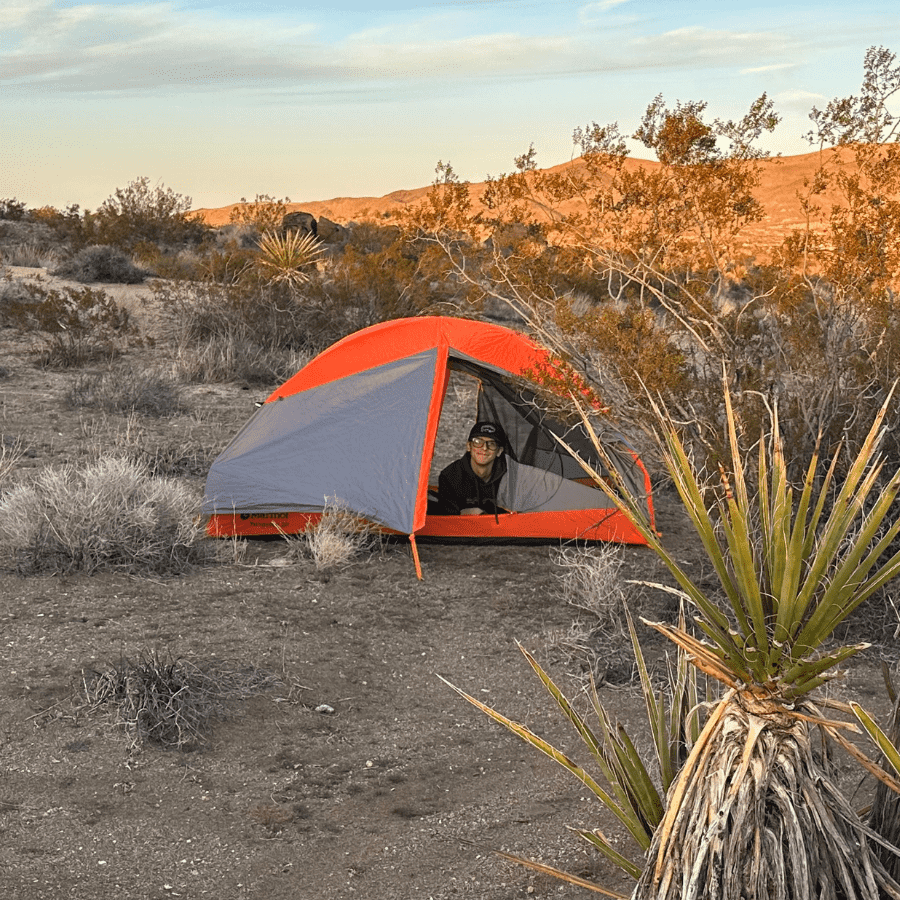
Where to stay in Joshua Tree National Park during the Winter
There are a few different accommodation options to consider when visiting Joshua Tree National Park in the winter months.
One option is to stay in a campground within the park. There are nine campgrounds in Joshua Tree National Park, each with its own unique features and amenities. Some campgrounds are first-come, first-served, while others can be reserved in advance. It is always a good idea to check the National Park Service website for updates on availability and any potential weather-related closures.
Another option is to stay in a nearby town or city, such as Twentynine Palms or Palm Springs. These towns offer a variety of accommodation options, including hotels, motels, bed and breakfasts, and vacation rentals. This can be a good option if you are looking for more amenities or if you want to be able to drive into the park each day.
It is also worth considering staying in a desert retreat or vacation rental. These can range from rustic cabins to luxurious yurts and are a great way to fully immerse yourself in the desert experience.
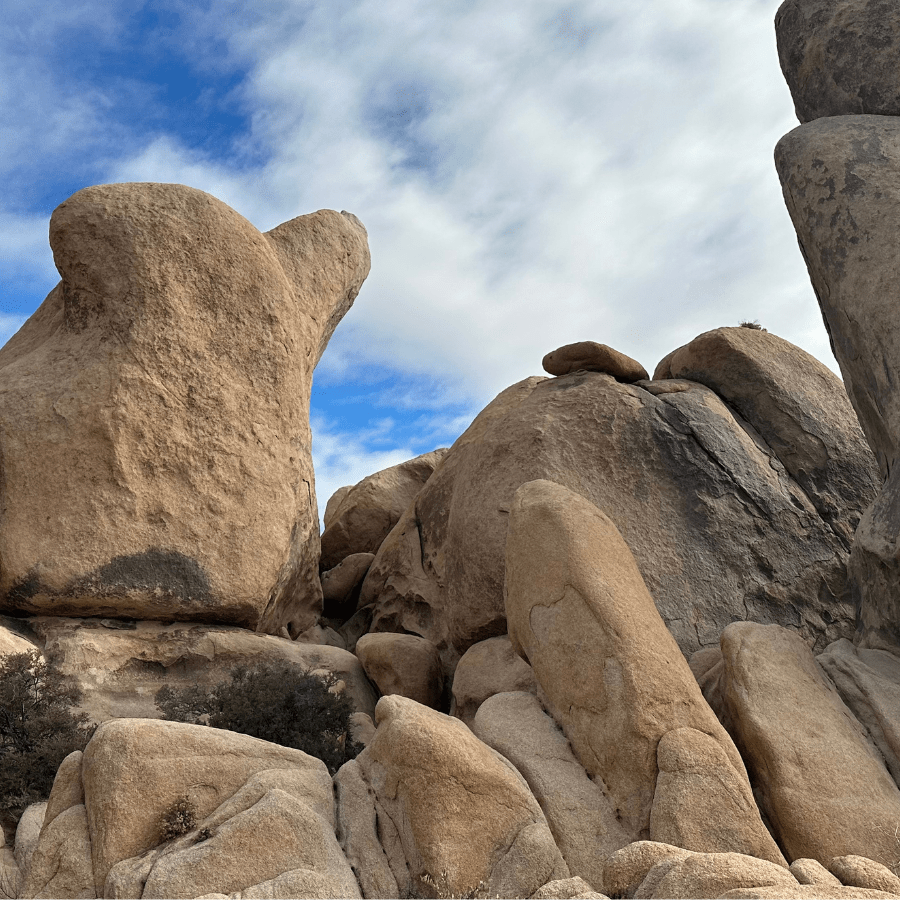
Tips for visiting Joshua Tree National Park in the Winter
This is probably the millionth time that you have heard or read this, but be sure to get the America the Beautiful Pass! This pass will allow you free entrance to National Parks for a year. The entrance fee for Joshua Tree National Park is $35, almost half the cost of the America the Beautiful Pass.
Bring warm layers: As mentioned, the desert can experience extreme temperature fluctuations, so it is important to bring warm layers for the evenings and early morning.
Pack plenty of water: It is important to stay hydrated while visiting the park, especially in the dry desert climate. Be sure to bring plenty of water and consider bringing a water filter or purification tablets if you will be hiking or backpacking in the park.
Wear sun protection: Even in the winter, the desert sun can be strong, so be sure to wear sunscreen, a hat, and sunglasses to protect your skin.
Check the weather forecast: Be sure to check the weather forecast before your trip and plan accordingly. While the winter months are generally mild in Joshua Tree National Park, it can still get quite cold and wet at times, so be prepared for a range of conditions.
5 Reasons to visit Joshua Tree National Park in the Winter
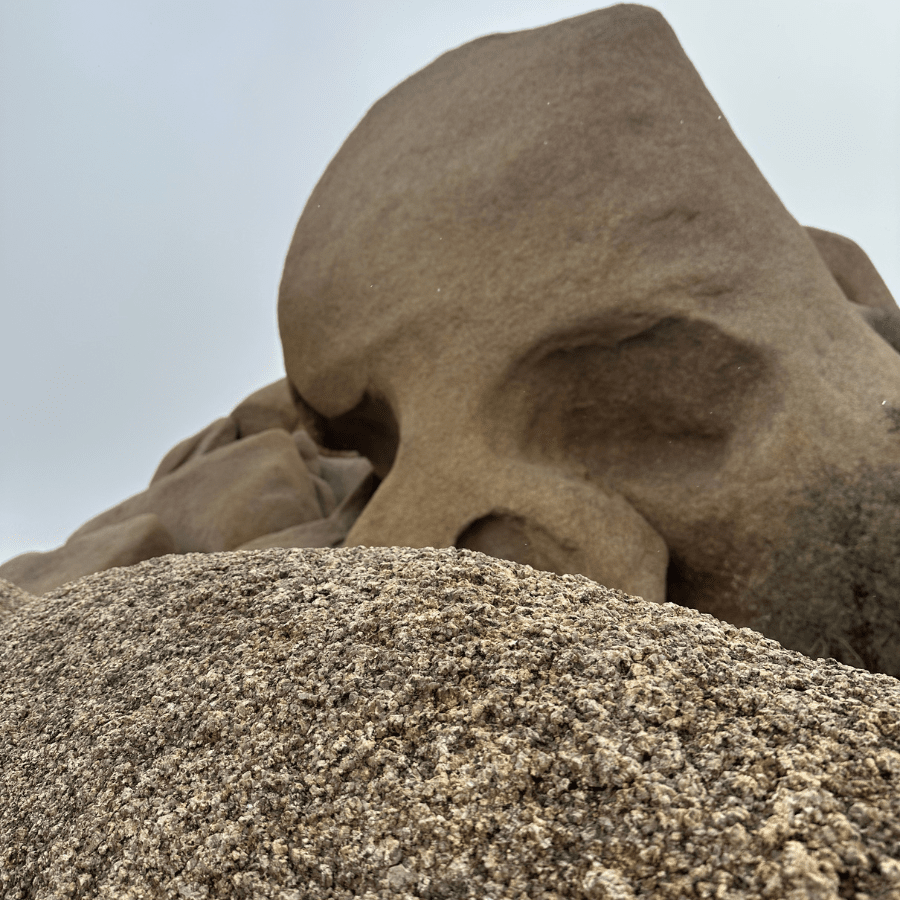
Fewer crowds in Joshua Tree National Park
One of the best things about visiting Joshua Tree National Park in the winter is that there are fewer crowds. This means that you can enjoy the park’s natural beauty in a more peaceful and uncrowded setting. Whether you want to go hiking, rock climbing, or just take in the views, you’ll have more space and solitude to do so.
The Beautiful Scenery of Joshua Tree National Park
The park is known for its stunning rock formations and desert landscape, and these features are particularly beautiful in the winter months. The air is crisp and clear, and the light is softer and more diffuse, creating a beautiful and peaceful atmosphere.
The winter months also offer different colors throughout the park than what would normally be seen in the summer or spring months.
Whether you are a nature lover or just enjoy being outside, you’ll find plenty to marvel at in Joshua Tree National Park.
Great Hiking in Joshua Tree National Park
Winter is a great time to go hiking in the park, as the temperatures are cooler and more comfortable. With over 500 miles of trails to explore, there is something for hikers of all levels.
Just remember the days are shorter so it is important to plan hikes accordingly, as early morning and during sunset it starts to get very chilly (especially if it is a windy day)!
Whether you want to tackle a challenging backcountry trail or just take a leisurely stroll through the park, you’ll find plenty of options.
Stargazing in Joshua Tree National Park
The clear, dark skies of winter make for great stargazing opportunities. Joshua Tree National Park is a designated International Dark Sky Park, meaning that the night sky is particularly clear and free of light pollution. When I say that it is free of light pollution, it is pitch black in areas.
This was probably the highlight of my recent backpacking trip to Joshua Tree National Park. A lot of people skip the day, and drive in just at night to see the stars.
So if you are looking for a unique and beautiful winter getaway, consider visiting Joshua Tree National Park. You’ll find plenty of outdoor activities, beautiful scenery, and peaceful solitude to enjoy.


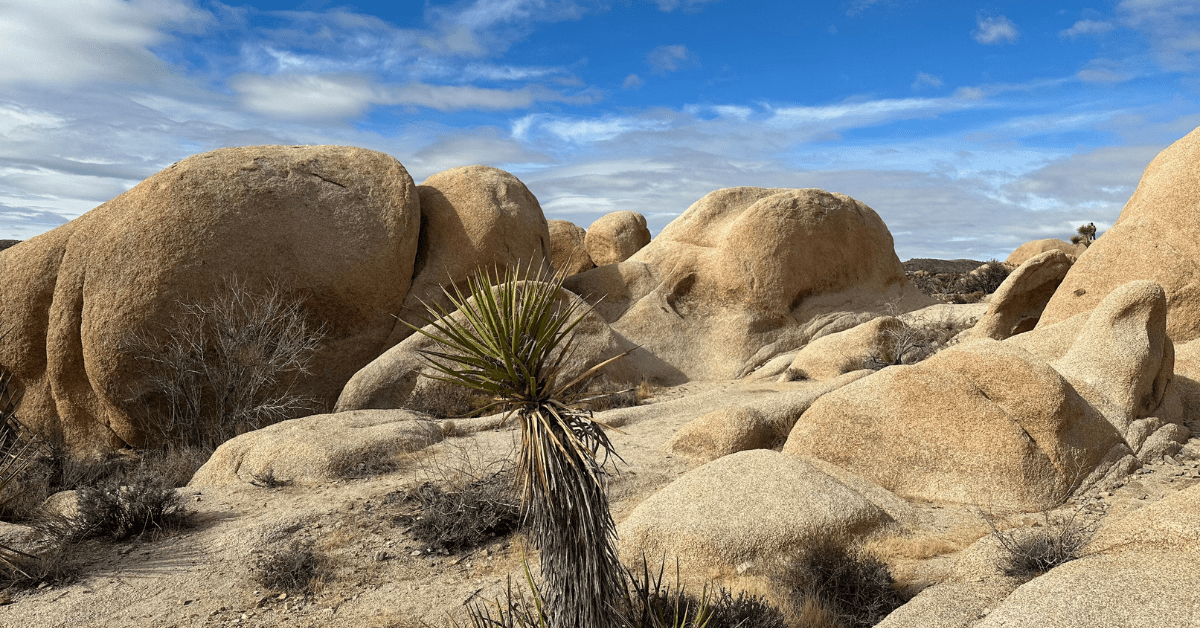
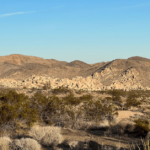
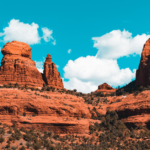
[…] 4 Reasons to visit Joshua Tree National Park in the Winter […]